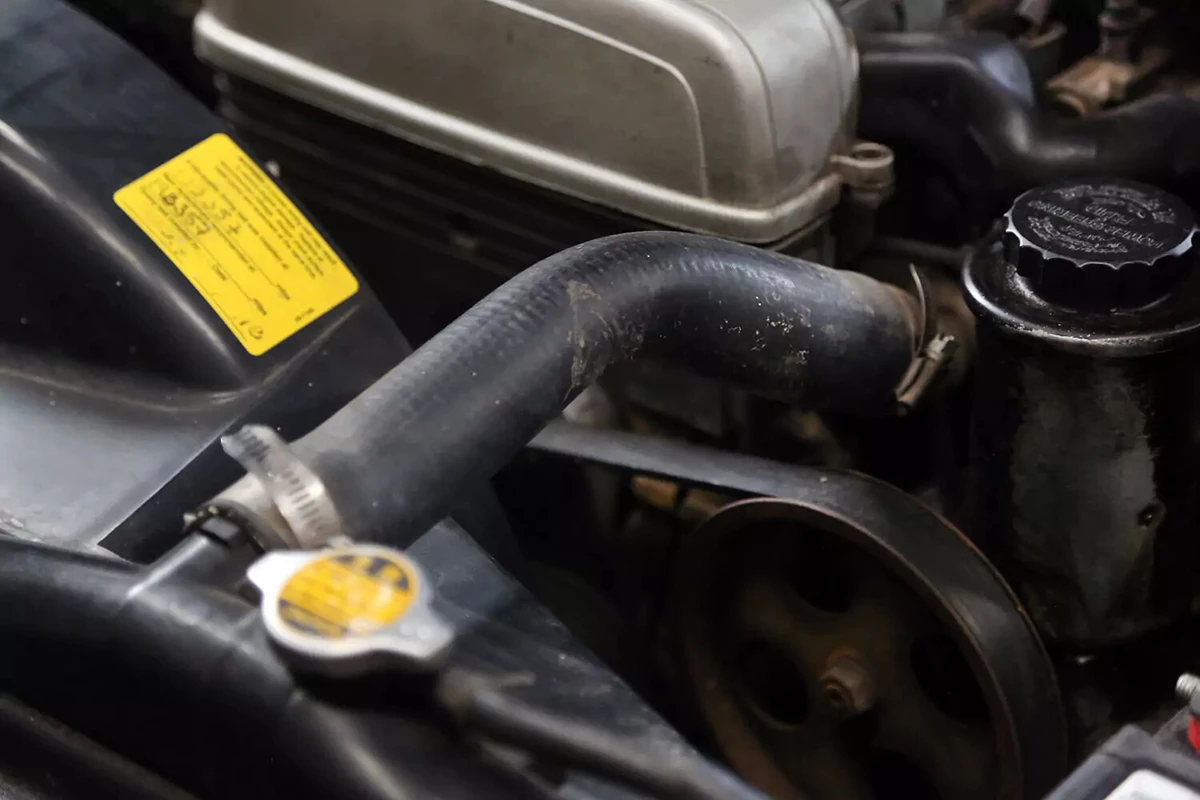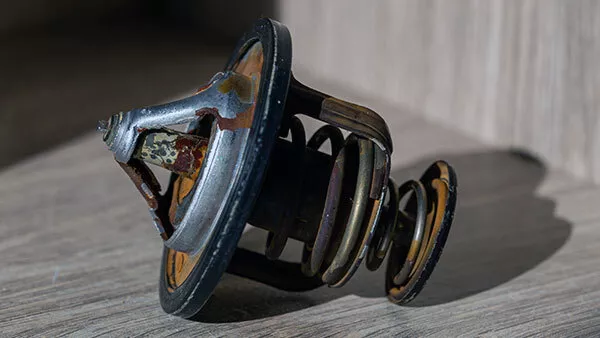Radiator hoses wear out over time. These rubber hoses are exposed to high heat and cooling that breaks down the material. If a radiator hose tears or splits, your engine will overheat.
You should replace your radiator hose about every five years. If your vehicle is older than five years, consider replacing your radiator hose before a radiator leak arises. You can usually replace one hose in less than 30 minutes.
Before Replacing Your Radiator Hose
For your safety, let the vehicle cool completely off before starting this project. The radiator is pressurized when the cooling system is hot.
If you open the radiator system while your vehicle is hot, scalding water and steam could gush out. After the vehicle is cool, slowly open the radiator cap slightly to ensure there is no pressure.
Tips and Tricks for DIY Radiator Hose Replacement
- Use a drain pan under the vehicle to catch any coolant that spills during this job.
- Automotive coolant is toxic. Dispose of coolant properly. - opens in new window or tab.

You don’t need a large pan, but changing a lower radiator hose will result in a total cooling system drain. It could be several gallons, so plan accordingly.

Your radiator has two large hoses: upper and lower. We are changing this upper hose, which is easy to locate at the top of the engine. The lower hose, which is often at the bottom of the radiator covered by a shroud and cooling fans, can be more difficult to reach.

There are several types of radiator hose clamps. Most are like this worm-gear clamp.
Spring hose clamp pliers are helpful for working with large spring clamps used on some vehicles. We suggest replacing those with worm-drive clamps.

Grab the radiator hose and twist it as you pull it off the radiator neck. You will lose some coolant in this process. Try to direct the coolant flow toward the drain pan.
Is the hose stuck? If so, use a sharp utility knife to slice it open. But don’t cut so deeply that you scratch the water neck, which may cause a leak.

Move to the engine side of the hose. Loosen the clamp and slide it back. Then, pull the hose off the engine as you did for the radiator side.

We suggest replacing the hose clamps when installing a new hose.
Take the new clamp that came with the new hose and place it over the engine’s water neck. That will make it easier to install the clamp over the hose.
Slide the hose onto the engine water neck. Don’t tighten the clamp yet.

Now, you’re ready to connect the new hose to the radiator. Slip the clamp onto the radiator water neck and bend the hose as needed to get it into position.
Slide and twist the new hose in place. Use at least 1.5 inches of rubber over the neck to ensure a good seal and enough room for the clamp to tighten over the hose.

Connect both sides of the hose before tightening the clamps. The clamps should be positioned right next to (but not on top of) the water neck’s bead. We used a 5/16-inch nut driver, which works well for hose clamps. You can also use a flat-blade screwdriver or socket and ratchet. Don’t over-tighten the clamp.
The clamp should compress the hose but not dig into it. If the rubber bulges through small openings in the clamp, it is too tight. Repeat for the radiator-side hose clamp.

Finally, fill the new radiator with a 50/50 mix of coolant and distilled water. It is easier to buy pre-mixed coolant, so you don’t have to find distilled water. Avoid using tap water, which has minerals and salts that can cause sediment to build up and corrode inside your cooling system and engine.
At this stage, your radiator will only take so much coolant. In other words, the cooling system won’t fill up until the engine reaches its normal operating temperature (usually 180 to 205 degrees Fahrenheit) and the thermostat is hot enough to open.
To properly fill the radiator, follow these steps:
- Start the engine and let it idle for a few minutes until the system reaches its operating temperature.
- Once the engine is warmed up to the point where the thermostat opens, coolant will start to move, and the level will drop. Also, the upper hose will get hot.
- Continue adding the coolant-water mix until it is once again at the top.
- Turn the heater all the way up so the heater core fills with fresh coolant as well.
- Replace the radiator cap and fill the expansion or recovery tank to the hot fill line on the reservoir's side. Turn off the engine and allow it to cool for at least an hour.
- Check the fluid level again. It will probably be low. Top it off another time. Do this for the next couple of days (after driving the vehicle) until the system is full. Never open a hot radiator. That’s dangerous.
- You might need to remove the remaining air from the system by burping your radiator. This typically requires running the car with the radiator pressure cap off for several cycles, allowing the air to escape. Consult your repair manual for details.
Share your feedback
This article is meant to provide general guidance only. Automotive maintenance, repair, upgrade, and installation may depend on vehicle-specifics such as make and model. Always consult your owner's manual, repair guide for specific information for your particular vehicle and consider a licensed auto-care professional's help as well, particularly for advance repairs.




















































